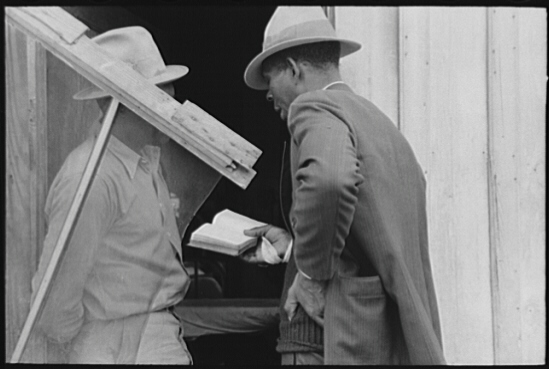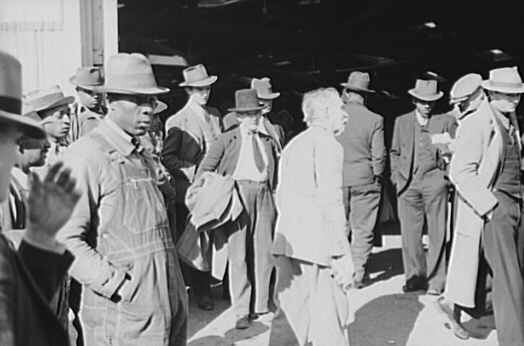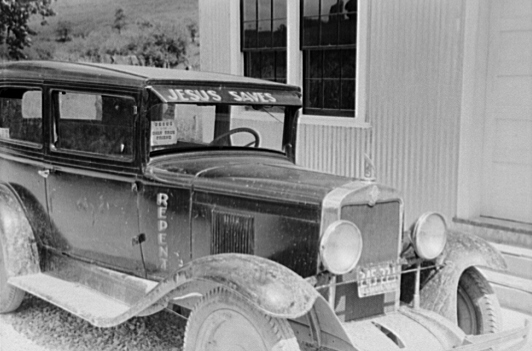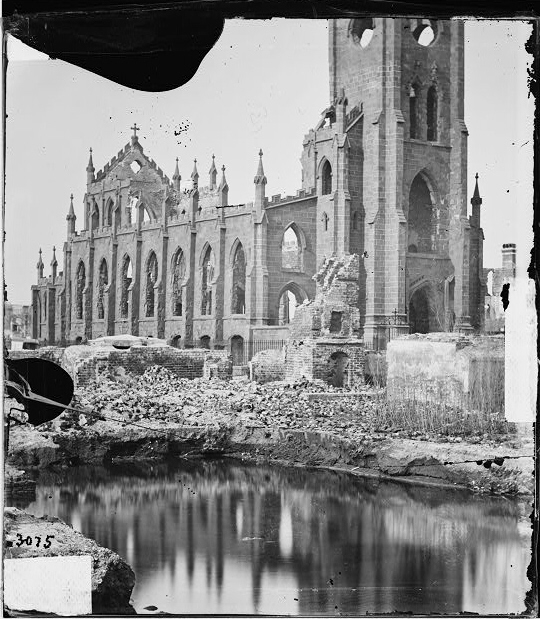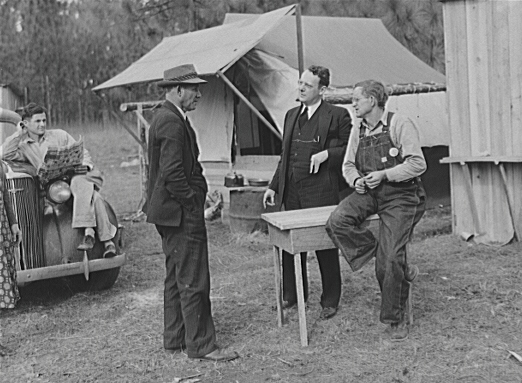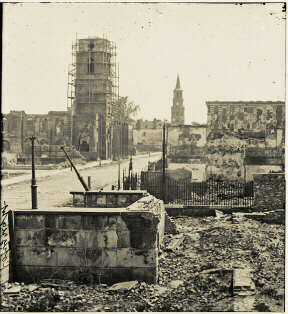The Strangely Ordinary Career of Freedom's Coming
Paul Harvey, University of Colorado, Colorado Springs
Some years ago, in reviewing Christopher Owen’s book The Sacred Flame of Love: Methodism and Society in Nineteenth–Century Georgia for the o
nline journal The North Star, I
wrote the following:
A
number of scholars (present reviewer included) have attempted studies that
present southern religion as the product of mutual interactions, hostilities,
and influence between whites and blacks. No one, really, has succeeded fully in
that venture yet. Even [Christine] Heyrman's work, terrific as it is, largely ignores
African-Americans altogether. Works by Owen and others, which focus on the rise
of denominational institutions, inevitably emphasize biracialism in antebellum
religion but provide little extended or close analysis of what makes
African-American religious history distinctive. Other studies of
African-American religious culture have treated African-American religion as an
entity that operates almost completely outside of white America, an
exaggeration of a different sort. Southern religious history waits for the
definitive synthetic work that brings together all of the explosion of
contemporary scholarship on southern religious culture in all its complexity, pain,
and possibilities.
At that time, I was
struggling to begin writing what has now been published as Freedom’s Coming:
Religious Cultures andthe Shaping of the South from the Civil War through the
Civil Rights Era (Chapel Hill: University of North Carolina Press, 2005).
More recently, I expressed similar sentiments –– in a paragraph of
self–cannibalism that we all commit at one time or another––in an article for A Companion to the American South. As commissioned by John Boles,
my assignment there was to survey the historiographical terrain of race and
religion in the South from the Civil War through the twentieth century, which
conveniently enough fit my project in Freedom’s Coming.
While in graduate school at Berkley, under the
sway of scholars such as Leon Litwack, James Gregory, and Lawrence Levine, I
set out to write southern and religious history that would incorporate the
experiences of white and black people; that would bring together cultural and
religious history alongside political and economic history; that would pay
close attention to the lives, aspirations, and expressions of ordinary folk but
also understand those lives within the context of the dominant regimes of
slavery, segregation, and economic oppression; and that would (I hoped) make religion
central to the story of southern history, even while complicating our ideas of
what historians think of as encompassed by the term “religion,” and especially
how they conceive of “southern religion.”
|
|
| "Fortunately, if there are not second acts in American lives, at least there are in scholarship. " |
|
|
Whether or not I have
accomplished these goals in Freedom’s Coming, I leave for readers and
reviewers to debate and decide. In truth, I first intended to accomplish these
goals, albeit within a more narrowly focused monographic work, in my first book
Redeeming the South: Religious Cultures and Racial Identities Among Southern
Baptists, 1865–1925. Upon the publication of that work, I felt
dissatisfied. Whatever the merits of that work, I had decided, I had failed in
the central task of writing a truly biracial and bicultural history. Reviewers
were very kind to Redeeming the South, but a couple of perceptive
reviews correctly pointed out that the book’s stated aim of writing such a
bicultural and biracial history was defeated by the structure of the book
itself, which juxtaposed “white” and “black” chapters on a variety of themes.
Some of this came about simply because the research pushed it that way. The
histories of the major organizations I was following –– the Southern Baptist
Convention and the National Baptist Convention –– were so different that they naturally
led to separating the book’s chapters. Some of it, too, came from a failure of
imagination and willpower on my part. Fortunately, if there are no second acts
in American lives, at least there are in scholarship.
So I went back to the basketball mid–court (my preferred cliché here, since “drawing board” implies that I can draw, which I
can’t), and tipped off the game again, hoping to hit a
few more 3–pointers and pull down some more boards. This time I felt
that, if not exactly always in “the zone,” at least I had a bit more savvy at
letting the game come to me. More precisely, early on I settled on three
central themes –– racism, racial interchange, and interracialism –– on which to
focus the book, and I simply ignored or left out vast quantities of material I
had laboriously researched but which simply didn’t meet the objectives of
exploring those themes. The pile of waste about my feet underneath the computer
desk was high, but this too strangely gave me the feeling that I was controlling
the material, rather than the suspicion I had with my dissertation and first
book that the material was controlling me, like some creature in a science
fiction movie. At a couple of points, I might reinsert some of that material,
as I will discuss further below. Mostly, however, I am content with those
choices, as they allowed me to explore my topics thematically, chronologically,
and culturally all at once.
Along the way, my graduate
training from Leon Litwack in writing clearly, seeking the widest variety of
documentation possible (including, in this case, much material drawn from
hundreds of hours listening to the amazing compilation of music CDs which have
made the staggeringly diverse varieties of southern religious music from
earlier in the twentieth century available to listeners), and expressing human
empathy even in the course of scholarly analysis remained central to my writing
and rewriting, and rewriting. The book’s dedication to Leon Litwack, my
graduate school mentor, expresses this note of gratitude; the co–dedication to
Sam Hill will need no explanation to readers of this journal.
With the help of some early
reviewers of the book, such as Edward Blum on H–SOUTH, I have been able to
think through a couple of points which did not turn out quite as satisfactorily
as I would have liked. One is the Scopes Trial. How can a book covering
religion in the South from the Civil War through the 1980s just pay a glancing
reference to this mega–event, even if it was, to some degree, a media pseudo–event?
Well, I managed to do exactly that, and intentionally so.
My material on controversies
over evolution are contained mostly in chapter two, in the section on southern
progressivism, and a bit in chapter five, which discusses the history of
southern religious conservatism. At both points, I chose largely to ignore the
Scopes Trial, although I certainly discussed the issues raised by evolution
within the context of southern religious thought. My approach to the issue has
been informed very much by Edward Larson’s Summer for the Gods, Charles
Israel’s work Before Scopes, as well as by Randall Hall’s excellent
biography of William Louis Poteat, the Baptist biology professor and later
president of Wake Forest who has long been a hero for exponents of free thought
in the South, but more lately has come under scrutiny for his sympathy with
eugenics (certainly not an uncommon view among progressives of that era). Thus,
for the purposes of my book, I considered it most important to understand the
response to various forms of modernism by southern religious progressives (in
chapter two) and later by southern religious conservatives (in chapter five).
In the process of creating southern fundamentalism, the latter laid the
groundwork for later attacks on desegregation as contrary to God’s divine
command.
But in writing Freedom’s
Coming, I could not then see that a discussion of Scopes was especially
relevant to the main themes that I wanted to pursue––those being racism, racial
interchange, and interracialism in southern religious history. Thus, I chose to
pass over the monkey trial. I thought I did not have anything of significance
to say about Scopes that had not been covered expertly by Edward Larson,
Charles Israel, and many others. Thus I pretty much ceded the ground to them.
Since completing the book,
however, I have rethought this choice. In particular, Jeffrey Moran’s work on
race and the Scopes Trial showed me exactly what I could not see for myself,
that is, how to incorporate a media spectacle such as Scopes into my broader
discussion of religion and race in the South and in African–American religious
life. Moran documents the response of African–American church people to the
evolution controversy and to Scopes, and thus sheds light on a subject that I wish
I had taken up myself. Thus, no matter how diligently we may research, we
always have blind spots and are in need of historical grace.
Another issue remains unsettling, that of the relative balance between “white” and “black” religion in the larger picture of this book. I remain pleased with chapter 3, which deals with racial interchange in cultural and religious settings, because it is one moment when my vision of writing a biracial and bicultural history seems to gel most satisfactorily. Friends and colleagues that I dragooned into reading the manuscript agreed that this section probably would be seen as one of the most successful in the book.
In other cases and in other
parts of the book, I still wonder if the choices made were for the best, knowing
full well that if I had made other choices I would still remain uneasy about
them as well. For example, chapter one deals extensively with the emerging
theologies and theodicies of white and black churches after Reconstruction and
through the rise of Jim Crow, while chapter two covers white and black
progressives. Here, the battle for the limited space available in a book
usually comes down to something like the following: how much does one want to
cover and comprehend the traditions that became dominant, and how much space
does one want to allot to figures and lines of thought which remained
submerged––“lost,” in historical terms––but which are still important to
acknowledge as part of the complex history of an era? Unfortunately, that also
becomes a question of coverage that tends to break down by race, since white
traditions were clearly dominant while black lives and thoughts were usually
submerged under the rising tide of apartheid.
This issue remains difficult,
and I remain conflicted about it. I now wish I had spent more pages covering
lesser–known figures of black progressivism and religious radicalism in chapter
two, for example, and fewer pages discussing the white progressives who have
received probably excessive attention in the literature. The white progressives
were doubtless more “important” in terms of forging public policy, and,
frankly, they are simply easier to research. Thus, the compass tilts their way
in portions of the book, partly for justifiable reasons, partly because they were
white people who left abundantly documented lives in comparison to the more
hidden worlds of black liberalism. Moreover, the stories and struggles of some
of these people, notably including Howard Kester and the heterodox Presbyterian
minister Charles Jones, simply captured my imagination––doubtless a product of
my own white southern roots (if Northwest Oklahoma may be counted as part of
the South here). I hope I was more successful at balancing this with the
chapter on the civil rights movement, where whites are relegated to a
distinctly (and historically accurate) place of separate and unequal, and where
the sources allow for deeper explorations of “ordinary” people. I hope also my
stress on black religious activism during Reconstruction, through exploring key
figures such as William Jefferson White, Henry McNeal Turner, and many others,
sets the story of post–Civil War religion in proper context.
Another tricky issue is one
of historical teleology –– knowing what comes later, how does that affect the narrative
of the past? The book does have one implicit forward–looking narrative,
pointing to the civil rights movement. That’s obvious from the title of the
book itself. For other figures covered, I resisted making them precursors to
more recent times, even when various readers of the manuscript pushed me in
that direction. For example, in discussing Henry McNeal Turner in chapter one,
I asked the following question: to what degree does one see him as a figure
firmly planted in his era, and to what degree does one use him to point the way
to future theological developments (namely, the rise of “black theology” later
in the twentieth century) which would be of great historical significance?
I remain content with my
choice on Turner –– I hold that historians must see their subjects as part of
the era in which they live. There are some losses in doing so, but much greater
ones in ignoring something so fundamental to history as the pastness of the
past. History is not repetitive or cyclical; its “unique constellation of
contingencies,” to quote a recent classic article by Adam Gopnik in the New
Yorker, do not repeat. That’s why the clichés about the “lessons of
history” are often just that––clichés. Edward Ayers has put it another way,
writing of how he wants to emphasize “deep contingency” in preparing his study
of two counties during the Civil War, In the Presence of Mine Enemies. In teaching history to students who often are irritatingly beholden to
teleological clichés, I’m all about the contingencies.
To conclude, I still remain
convinced, to use the words that end the introduction to the book, that
American Christianity may be seen at “its most tragic, and its most triumphant”
in the South. Even as what the white liberal southern critic Lillian Smith called the “brutally mythic” idea of white
supremacy so disfigured the region, black southerners, in the great words of
one black Arkansan, “discussed that crap and it never did really soak in. Not
as much as they thought it was soaking in.” These two quotations begin the book
and set the stage for my effort at portraying the power and control, as well as
the frailty and ultimately delusionary design, of the southern version of
apartheid.
All Photographs are from the Library of Congress, Prints and Photographs Division Photograph
1. Negro Preacher reading the scriptures to Negro man, San Antonio, Texas, September 1939 LC-USF33- 012088-M5
2. Itinerant preacher spreading "religion" to farmers outside warehouse while tobacco auction sales are going on. Durham, North Carolina, November 1939 LC-USF33-030741-M5
3. Itinerant preacher's car in Campton, Kentucky, 1940 LC-USF33-031067-M3
4. Charleston, South Carolina, Cathedral of St. John and St. Finbar, 1865 LC-DIG-cwpb-02347
5. Traveling preacher, Reverend C.L. Bullard, with Jonathan Daniels and construction workers from Monroe, Louisiana. Alexandria, Louisiana, December 1940 LC-USF34-056608-D
6. Charleston, South Carolina. View on Meeting Street, looking south, showing St. Michael's Church, the Mills house, ruins of the Circular Church and theatre ruins in the foreground, 1865 LC-DIG-cwpb-02401
© 1998-2005 by The Journal of Southern Religion. All rights reserved. ISSN 1094-5253
This article published December, 2005

